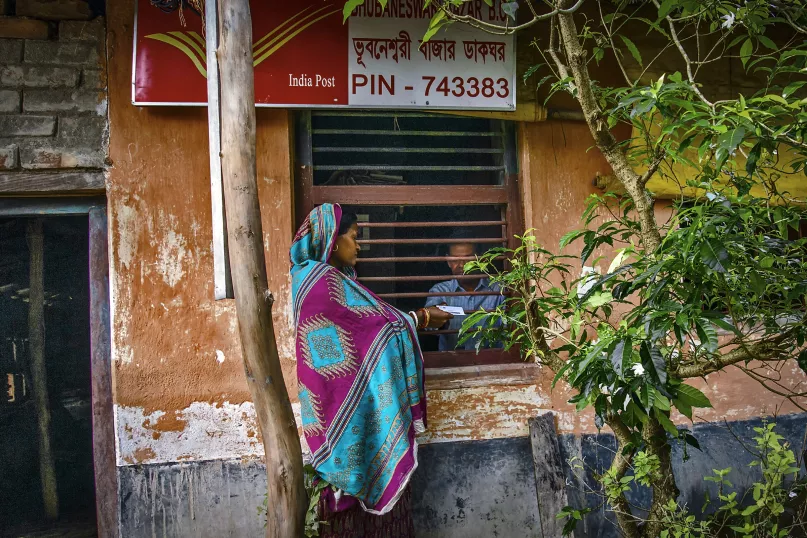In Posts We Trust

Post offices have a long tradition of offering financial services, dating back to 1861. They have come a long way since, and most are starting to venture into providing digital financial services (DFS) to their customers.
Globally, the postal financial services network comprises 1.96 billion accounts belonging to approximately 1 billion customers. Data collected by the Universal Postal Union (UPU) shows that nearly 91% of postal operators provide some form of financial service in the UPU member countries and territories. An estimated 900 million people also use the post office as an access point to make or receive payments.
Posts are increasingly turning to DFS channels for service delivery, in response to customer demand. However, adoption and use of postal DFS suffer the same fate as any new technology. Uptake is slow and cautious, with customers habitually falling back to the use of cash.
UPU’s Financial Inclusion Technical Assistance Facility (FITAF) is undertaking a series of studies to investigate the factors that affect the uptake of inclusive financial services through multiple channels, including DFS. In the first of the series, we explore a key factor that helps Posts to attract, retain, and grow their customer base – trust in the Post.
We hypothesize that increased trust in the Post, as an institution, leads to increased uptake of postal financial services. It also empowers and encourages customers to engage with the Post through multiple channels, including digital platforms.
Drawing on the UPU’s experience of working with Posts to achieve their inclusive financial services strategy, and based on an assessment of existing literature, we identify four measures to increase trust in Posts in general, and postal financial services in particular:
- Leverage the postal brand: As an institution with a high level of engagement with the community, Posts in certain countries, but not all, enjoy a trust premium. To improve the uptake of financial services, Posts should tap into the trust capital that they have built up over the years.
- Offer financial, numerical and digital literacy skills to customers: Trust starts with a clear understanding of the financial products and services for which customers sign up. This clarity and understanding become even more important when the amounts are small, when customers have limited literacy or numeracy skills, and when they are not accustomed to using technology. Capitalizing on their reach and presence, Posts can provide literacy programs and human interaction to explain products and services, as well as imparting basic financial skills to customers.
- Ensure that Post-customer interaction is secure, simple and seamless: Customers must have simplified access to postal financial services, through multiple channels that aim to make their financial lives easier. Posts also need to make an effort to provide simple, robust and interoperable solutions.
- Provide access to real people: Easy access to human interaction both at customer service locations and on the customer’s doorstep are critical factors that help to build trust in postal financial institutions. Leveraging their physical distribution network, which often extends to remote rural locations, and with the help of postal carriers, Posts have a natural advantage over formal financial institutions when it comes to building trust with their customers.
In a recently published paper, we explore how Posts leverage these trust-building measures to their advantage, using case studies and early lessons learned from the UPU’s FITAF. One way in which trust in the Post is strengthened is through the delivery of government-to-person (G2P) services. A leading example is Egypt Post, which delivers a range of G2P payments and has 35 million registered customers (more than half the country’s adult population), with 25 million savings accounts.
Posts are also investing in their customers by providing financial literacy training. Poste Italiane, for example, collaborates with the Italian Ministry of Education to provide financial literacy training to the nation’s youth, preparing them for their future financial lives.
Finally, leveraging the reach and strength of their network, Posts are reaching out to communities that are underserved or unserved by traditional financial service providers. In 2018, Sri Lanka Post had nearly twice as many branches as commercial banks. The Indian Post Payments Bank has a vast network of postal employees in every district, town and village, and offers doorstep banking for urban and rural households.
This outreach and engagement builds trust with customers and communities and increases uptake of postal financial services through multiple channels. A UPU study has shown that financially vulnerable populations such as the poor, less educated, and those outside the labor force are more likely to have Postal accounts.
Through these and other methods, Posts are leveraging critical trust-building factors with their customers in order to bridge the financial inclusion gap and increase the uptake of financial services through digital channels.
Read more in the full publication: In Post We Trust


